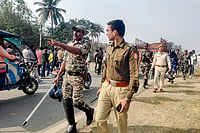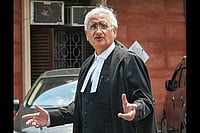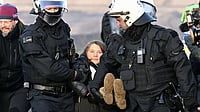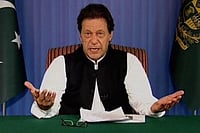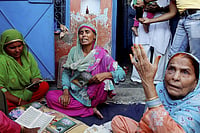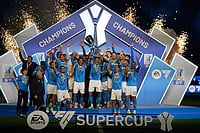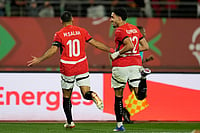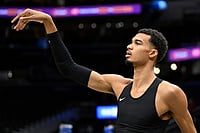Last week when Tata Coffee bought a 34.3 per cent stake in an espresso bar chain, it made front page news. The Barista Coffee Company that runs 38 coffee pubs across the country was wooed by more than one suitor—from venture capitalists to fmcg majors, they all had tried to buy into Barista. Just over a year old and the cup-coffee business has caught popular imagination at a scale that even a Fortune 500 brand like McDonald's could not achieve in India in such a short time. Today, whether it is in Mumbai, Delhi, Bangalore, Chennai or Pune, anything that is new, hip and happening has to be a coffee bar.
And all the excitement in the market is being brewed by domestic players. Barista, Qwiky's, Coffee Day, Coffee Mantra, Aqua Java, Coffee?, Java City...their breed's growing with every cup served up.
There are few figures to suggest the actual size of this nascent cup-coffee business but the speed with which coffee bars have mushroomed all over India tells its own story. In 1999, you had the odd outlet in Bangalore and Chennai, today you have 68 cafes across the country. And each of the players has plans to open many more. Barista hopes to have 76 bars by the end of 2001; Bangalore-based Coffee Day that runs Cafe Coffee Day plans to increase its 18 outlets to 200 in the next three years while Chennai-based, nri-promoted Qwiky's plans to move from 10 cafes today to 55 by 2003.
Harish Bijoor who marketed coffee for a decade-and-a-half, having worked with Brooke Bond Lipton India and headed Tata Coffee's marketing, feels the market for coffee cafes is starting to open up and boom. "I anticipate a doubling of the market in the next four to five years."
Expansion is the mantra: move in real fast to cash in on the first mover advantage. Barista, flush with new funds from Tata Coffee, plans to invest Rs 40 crore by next March. Coffee Day will pump in Rs 5-8 crore for its 13 new outlets planned over the next couple of months and Qwiky's—which has so far invested Rs 9 crore in the business—is on the verge of attracting venture capital funding.
Traditionally, India has been a tea-drinking nation with coffee consumption limited to a few South Indian states. Annually, we produce about 3.2 lakh tonnes of coffee out of which only 55,000 tonnes is consumed inside the country, and the rest is exported. The per capita consumption of coffee stands at just 52 gm. In South India, the figure is 240 gm while in the rest of the country, it is a paltry 2.4 gm. Compare this with the 620 gm per capita consumption of tea and you could be justified in wondering if the current excitement is misplaced.
No, is the firm answer from all the cafe chain owners. "Take the case of Japan and the UK. They were tea-drinking nations, but within a decade they have completely moved to coffee," says Ravi Deol, managing director, Barista Coffee Company. The espresso movement that first started in Italy has been given a tremendous boost by cup-coffee giant Starbucks which is 13 years and 4,400 bars old. The fact that Starbucks too is waiting in the wings to enter the Indian market is a reiteration of the potential of this market.
"Starbucks and Best Coffee of Seattle have both done feasibility studies for India, but the likes of Barista have taken a head start. They already have 38 outlets. Starbucks, if they come now, will need at least two years lead time to catch up. The best option would be to buy out one of the existing chains," says an entry strategy consultant.
But till that happens, the homegrown brews continue to be hot. Says Edwin Paul, Qwiky's vice president: "The coffee culture always existed, there were simply no options. Even in the tea capital of the south, Hyderabad, we had no problems, in fact the question 'will the concept work?' never came up." Deol agrees: "The gap always existed in the market because there was no availability of good liquid coffee."
There are largely three types or ways of making coffee: espresso, filter and instant, and the fastest-growing coffee in the world is espresso. It is this espresso revolution that is catching on in India too. These coffee bars pride themselves in serving coffee that is "special", hence the term specialty coffee bars. And this special coffee comes from the Arabica bean which is a high-quality coffee grown in high altitudes. It is low in caffeine, not acidic and without an aftertaste when compared to the robusta coffee that is a low-end coffee. So for a palate that is uninitiated, the Arabica provides the perfect flavour.
In India, coffee has traditionally been drunk in Udupi restaurants as well as in five-star coffee shops, and the largely south-centric liquid retail market, stands at around Rs 400-700 crore. A newer phenomenon is the coffee-vending machines set up by companies like Nestlé, Tata Coffee and Hindustan Lever. As many as 14,000 vending machines dish out 118 million cups of coffee a year.
The coffee bars, however, come at the top end of the value chain. They deliver the highest margins. As you go down the value chain to soluble coffees, powdered ones, roasted beans and finally the end raw bean, the value and margins keep decreasing. And marketers feel the cafe revolution signifies the intent of the coffee industry to tap into the value end of coffee. "To popularise coffee drinking, there's a need to climb higher in the coffee value chain," says Bijoor.
In any coffee bar, the ambience is as critical as the product, the coffee experience even more. Coffees provide a sort of aromatherapy as well, it is as much about smell as taste. This is a reason why a coffee bar is likely to do better business than a tea cafe. "When people say let us catch up for coffee, they may end up drinking cola, but it's the whole coffee moment that is important; we service that moment," says Paul. Visit any coffee bar and you know exactly what he means.
The cafes in India today largely cater to the youth and the upper middle class. While Coffee Day is targeting the 15-30 age group with coffees 30 to 40 per cent cheaper than what Barista or Qwiky's might be serving, the latter two are not making a beeline for any one segment.
"When we started out, we wanted to be class- and age-neutral. But found that 60 per cent of all those who came to Qwiky's were below 30," says Paul. Deol feels that it's always the youth and urban upper classes that first adopt a category. "It is only later that it filters down to other classes and cities."
And though it is still early days, coffee bars are moving into smaller towns and cities as well. Besides metros, Ludhiana, Jaipur and Goa too are on the map. Barista also has plans to open outlets in Dubai, Singapore and Thailand in the next six months. Another marketing strategy of coffee companies is to set up shops within shops or island bars in stores, offices and airports. Coffee Day, for example, has tied up with IT giant Infosys to set up Cafe Coffee Day in their offices across the country.
Competition, of course, spurs any market but it's always those with financial muscle who stay above it; the cup-coffee business is no different. While most such companies say they are beginning to make operational profits—one outlet takes about 18 to 20 months to break even—they're still in spend mode. Market penetration and location are critical. No one is going to drive for hours to reach a favourite coffee haunt, so setting up a chain is absolutely essential. And "you need deep pockets to set up a specialty coffee chain," says Deol. Enter the venture capitalists!
Noir Or Au Lait?
Whatever your espresso intention, cup-coffee businessmen are willing to oblige. And milk it.

Noir Or Au Lait?
Noir Or Au Lait?
Published At:
MOST POPULAR
WATCH
MORE FROM THE AUTHOR
×













